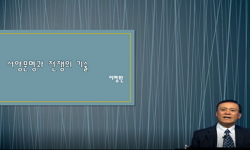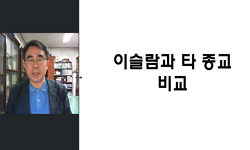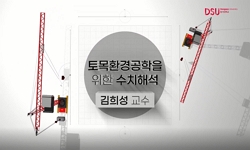당조는 왕조 운영을 위하여 문직과 무직을 엄격히 구분하였지만 문직과 무직을 담당하는 사람들은 문인과 무인으로 제한하지 않았으며 원한다면 일정한 절차를 통과한 후 문인은 무직을, ...
http://chineseinput.net/에서 pinyin(병음)방식으로 중국어를 변환할 수 있습니다.
변환된 중국어를 복사하여 사용하시면 됩니다.
- 中文 을 입력하시려면 zhongwen을 입력하시고 space를누르시면됩니다.
- 北京 을 입력하시려면 beijing을 입력하시고 space를 누르시면 됩니다.

당대(唐代) `무재(武才)`와 `문(文)·무(武)`의 분리 = About Military Talent(武才) and Separation of Civil(文) and Military(武) in Tang Dynasty
한글로보기https://www.riss.kr/link?id=A102929607
-
저자
김종섭 (서울시립대학교)

- 발행기관
- 학술지명
- 권호사항
-
발행연도
2017
-
작성언어
-
-
주제어
무재(武才) ; 무거(武擧) ; 무제거(武制擧) ; 무성왕묘(武成王廟) ; 문무(文武) ; military talent ; imperial military examinations ; wuzhiju ; Wuchengwangmiao ; civil and ; military
-
KDC
900
-
등재정보
KCI등재
-
자료형태
학술저널
-
수록면
203-226(24쪽)
- DOI식별코드
- 제공처
-
0
상세조회 -
0
다운로드
부가정보
국문 초록 (Abstract)
당조는 왕조 운영을 위하여 문직과 무직을 엄격히 구분하였지만 문직과 무직을 담당하는 사람들은 문인과 무인으로 제한하지 않았으며 원한다면 일정한 절차를 통과한 후 문인은 무직을, 무인은 문직을 제수 받을 수 있었다. 당조는 문직과 무직의 상호 교차 전선을 허용함으로써 문인과 무인을 관료라는 범주에서 동일한 존재로 인식하였다. 당조가 원한 `武才`는 무예만 능한 인재가 아니라 문을 겸비한 인재라고 할 수 있다. 당조는 무거를 통해서 유능한 무재를 선발하려 했지만 무거의 과목이 대부분 무예와 관련된 것이어서 문적인 부분이 미흡하였을 뿐만 아니라 武擧를 관장한 兵部는 의도적으로 무예에 능한 인재를 선발하였다. 무거는 무거의 과목과 병부의 인선 경향으로 인하여 본래의 의도와 달리 문적인 요소를 기르지 못한 사람들도 응거하게 됨으로써 무예에만 능한 인재를 양성하게 되는 계기가 되었다. 당대 무제거는 문제거와 마찬가지로 황제의 명령이 있을 때마다 시행되는 부정기 시험이었으며, 때로는 문제거와 동시에 실시되기도 했다. 무제거의 과목을 보면, 전체 64%는 智謀와 관련된 것이며, 안사의 난 이후에는 86%에 이른다. 당조가 무제거를 통해서 얻고자 한 무재는 군대를 통솔하고 전략과 전술을 자유자재로 구사할 수 있는 統帥였다. 당조가 무제거를 실시한 것은 무거의 편향된 점을 보완하기 위한 의도가 있었으며, 당말에도 擲筆從戎하는 문인들의 존재가 가능하게 한 이유 중하나이다. 현종이 무를 일으키기 위해서 세운 太公廟는 이후 武成王廟로 격상 되었으며, 무성왕묘를 둘러싸고 새로운 사회 현상이 출현하였다. 무성왕묘는 구심점을 지니지 못했던 무인이나 무직 관료에게 공간적, 심리적 구심점을 마련해 주었다. 문직 관료는 무성왕묘의 격을 낮추려 한 반면 무직 관료는 文宣王廟와 동격으로 유지해 줄 것을 주장하는 등 무성왕묘는 문과 무의 대립점에 있었다. 이 구심점은 당조의 의도와는 달리 문인과 문직 관료들의 비교 대상이 됨으로써 문과 무는 하나가 아닌 서로 다른 둘이 되는 계기가 되었다. 당조는 문직과 무직의 상호 교차 허용, 무거와 무제거의 실시, 무성왕묘의 설치 등을 통해서 줄 곧 문무겸재를 원하였다. 하지만 이런 조처는 도리어 문과 무가 분리되는 계기가 되어 당말에는 문만을 추구하는 부류, 무만을 추구하는 부류, 여전히 문무겸재를 추구하는 부류가 혼재하게 되었다.
다국어 초록 (Multilingual Abstract)
To manage its dynasty, the Tang Dynasty strictly categorized civilian post(文職) and military post(武職). However, the administrators for the civilian post and military post were not restricted to literati(文人) and armyman(武人). If demanded,...
To manage its dynasty, the Tang Dynasty strictly categorized civilian post(文職) and military post(武職). However, the administrators for the civilian post and military post were not restricted to literati(文人) and armyman(武人). If demanded, after following a set procedure, a literati could obtain a military post government position and a armyman could obtain a civilian post government position. The Tang Dynasty allowed a cross appointment between literati and armyman and considered the two as an equivalent under the category of bureaucrat. The Tang Dynasty wanted a military talent who is not only talented in martial arts but also in literature. The Tang Dynasty tried to select military talents through imperial military examinations(武擧), but imperial military examinations lacked its testing ability in literature section because most of its subjects were related to martial arts. Also, the board of war(兵部) who took charge of imperial military examinations intentionally selected people with military talents. Because of imperial military examinations`s subjects and the board of war`s tendency in appointment, people without literary talents could yingju(應擧) for the test. Hence, it was a cause for raising people only talented in martial arts. Similar with wenzhiju(文制擧), the Tang Dynasty`s wuzhiju(武制擧) was an irregularly examination which was held whenever the emperor ordered to have one. Sometimes it was held simultaneously with wenzhiju. 64% of wuzhiju`s subjects are related to the practical ingenuity, and after the Anshizhiluan(安史 之亂), the rate reached 86%. Military talent, who the Tang Dynasty wanted to gain through wuzhiju, is a person who a tongshuai(統帥) who took the reins to the army by having a good command of stratagems. The purpose of the Tang Dynasty`s wuzhiju was to complement the biased aspects of imperial military examinations. This was the basis for the existence of literati who did zhibicongrong(擲筆從戎) at late Tang dynasty. Taigongmiao(太公廟), which Xuanzong(玄宗) built to raise military, later upgraded to Wuchengwangmiao(武成王廟) and a new culture developed around Wuchengwangmiao. Wuchengwangmiao provided special and psychological pivot to wuren and military servant who did not possess the pivot. Because civil servants wanted to degrade Wuchengwangmiao`s class while military servants wanted to upgrade it to become the equivalent of Wenxuanwangmiao(文宣王廟), Wuchengwangmiao created a conflict between civil and military. Unlike its purpose, the pivot became a comparison target for literati and civil servants and led civil and military to be separated as two. Through the cross appointment of civilian post and military post, operation of imperial military examinations and wuzhiju, installation of Wuchengwangmiao, the Tang Dynasty consistently sought the integration of literary and martial arts. However, such practices inversely led to the separation between civil and military and ultimately created an environment where a group only seeking civil, a group only seeking military, and a group seeking the integration coexisted at late Tang dynasty.
동일학술지(권/호) 다른 논문
-
- 한국중국학회
- 이연도 ( Lee Yundo )
- 2017
- KCI등재
-
존재의 변화 혹은 삶의 변용 ― 노장철학의 문맥에서 본 장자 실천론의 특징
- 한국중국학회
- 박원재
- 2017
- KCI등재
-
유신(庾信)의 역사의식과 문학적 상상력― 「애강남부(哀江南賦)」론(論)
- 한국중국학회
- 노경희 ( Noh Kyunghee )
- 2017
- KCI등재
-
추측의 `회(會)`구문의 양태부정과 명제부정의 차이에 대한 힘역학적 해석
- 한국중국학회
- 이은경
- 2017
- KCI등재




 KISS
KISS






